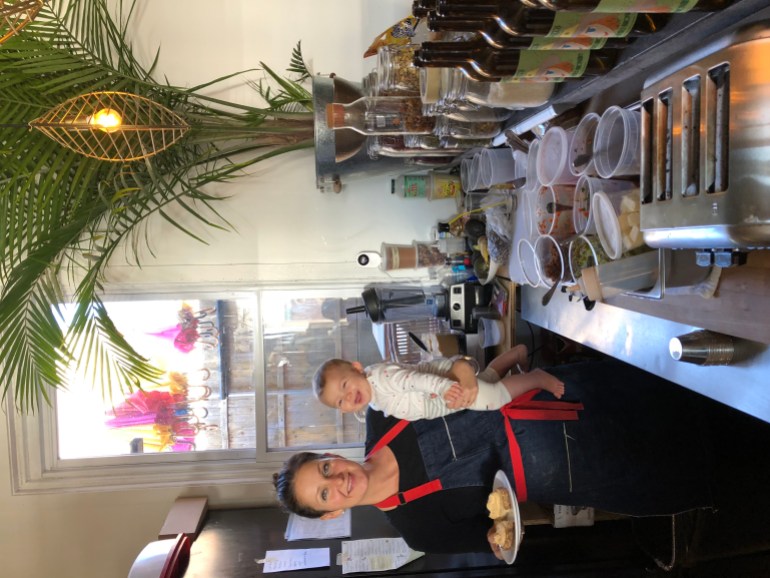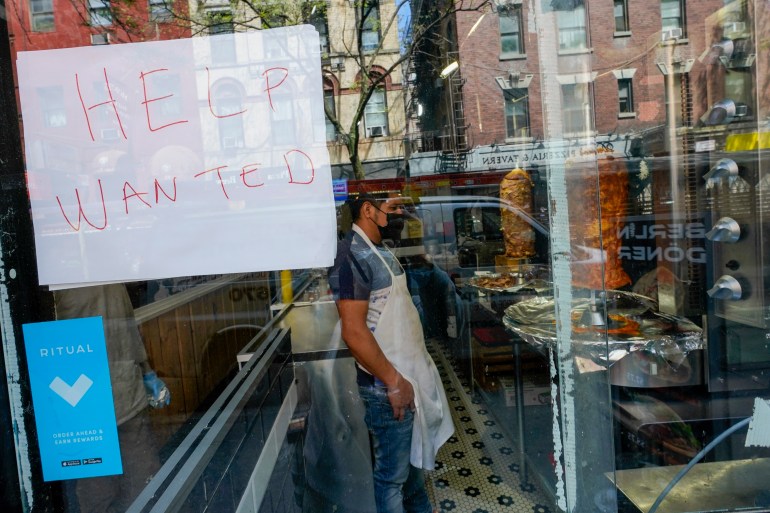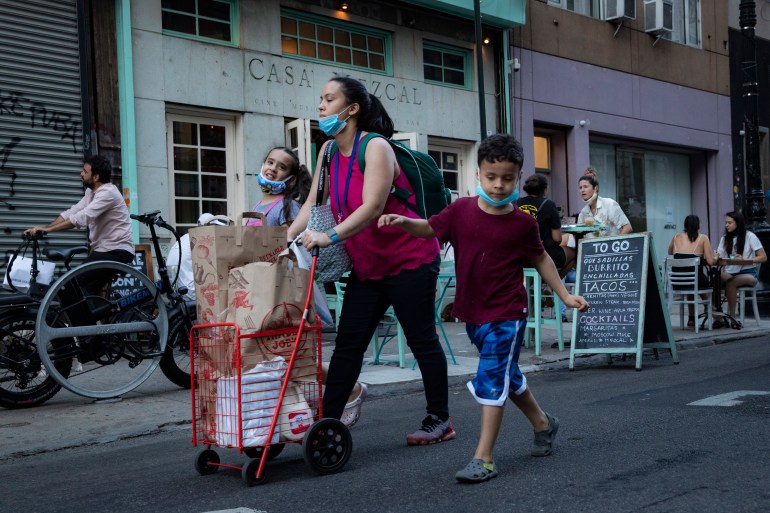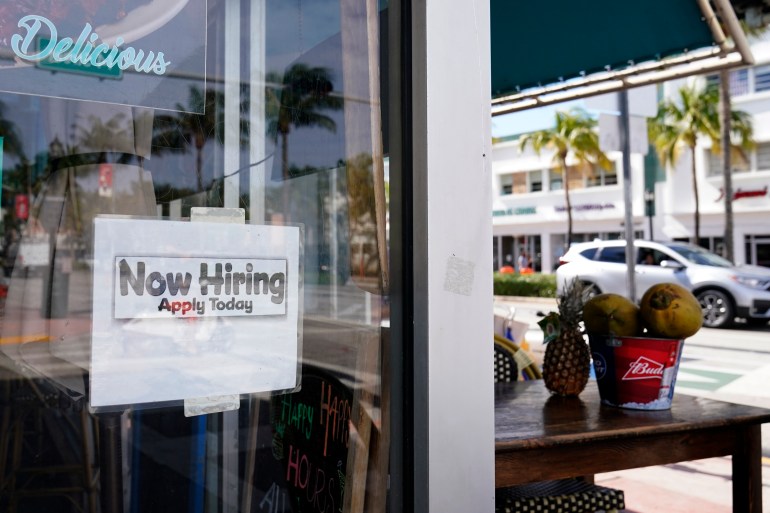Benefits or bottleneck? US restaurants struggle to hire workers | Business and Economy News
Eva Johannesdottir has gone through six kitchen workers since reopening her restaurant The Cliff last May. Each time, she invested time and money to train them, but they were unable to keep up with the demands of serving busy brunches and take-out orders at the small cafe in Jersey City, New Jersey in the United States.
“The biggest challenge with staying in business right now is to find help,” Johannesdottir told Al Jazeera. “One of the main reasons why I cannot have the business open more than three days a week right now is because I just can’t find workers.”
Her problem is not unique. As capacity limits on restaurants are lifted and Americans indulge their pent-up desire to dine out, many establishments have “help wanted” signs gathering dust in their windows.
Restaurants were among the hardest-hit businesses during the coronavirus pandemic and ended 2020 with around 3.7 million fewer jobs than they started the year with, according to the US Bureau of Labor Statistics.
But as vaccinations have increased and restrictions have lifted, demand for restaurant workers has come roaring back: there were 1.2 million leisure and hospitality job openings in March, but a lot of those jobs aren’t being filled.
 Like many other restaurant owners in the United States, Eva Johannesdottir has struggled to hire workers as demand for dining picks up following a tough 2020 [Courtesy: Eva Johannesdottir]
Like many other restaurant owners in the United States, Eva Johannesdottir has struggled to hire workers as demand for dining picks up following a tough 2020 [Courtesy: Eva Johannesdottir]Staffing levels remain 14 percent below pre-pandemic levels, the National Restaurant Association found. In an April survey, 84 percent of restaurants said their staffing levels were lower than what they would normally be without COVID-19, with nearly half of them operating with staffing levels more than 20 percent below normal.
Restaurants eager to up their sales after a devastating 2020 find themselves constrained by the lack of workers — and they’re paying the price.
It can cost almost $6,000 to find, screen and train an hourly worker, a study by restaurant platform Toast found, and that’s in an economy when every other restaurant isn’t also looking for servers, bartenders, cooks, dishwashers and front-of-house staff.
The staffing shortage is being driven by a number of factors, experts say, from bottlenecks and workers who can’t find childcare to people switching careers. But one factor, in particular, has become a political lightning rod — the $300 federal weekly top-up to state unemployment benefits, which some argue acts as a disincentive for people to go out and find jobs.
“A lot of people are like, well, I’m going to just enjoy the summer, spend time with family, keep collecting and then go back to work in September,” Johannesdottir said.
Benefits debate
In New Jersey, state unemployment benefits top out at $731 per week. Add in the $300 federal top-up, and that’s $1,031 per week. By comparison, a person working full-time at the state minimum wage of $12 per hour earns $480 per week.
Some of Johannesdottir’s employees at The Cliff are hourly and others are salaried, with the lowest wage starting at $16 per hour. Still, she can’t afford to match the enhanced unemployment benefits — especially as food prices have soared.
“The margins are so small, especially for a place like mine that doesn’t have a liquor licence,” Johannesdottir said. “If I bump everybody up to the same or higher level of pay, I don’t think we would survive.”
 There were 1.2 million leisure and hospitality job openings in March, according to the US Bureau of Labor Statistics, but many of those jobs aren’t being filled [File: Mary Altaffer/AP Photo]
There were 1.2 million leisure and hospitality job openings in March, according to the US Bureau of Labor Statistics, but many of those jobs aren’t being filled [File: Mary Altaffer/AP Photo]Twenty-five states have announced plans to withdraw from the federal unemployment benefits programme, which includes the $300 weekly top-up, all of them led by Republican governors.
But many experts argue it’s an oversimplification to say that higher unemployment benefits are the only reason restaurant owners are having trouble hiring right now.
Ioana Marinescu is an assistant professor at the University of Pennsylvania and a faculty research fellow at the National Bureau of Economic Research.
Marinescu said her research shows that while unemployment benefits may be lowering the number of applications and making people more discerning, “the biggest cause of the difficulties is simply the congestion in the labour market — everybody is trying to hire at the same time.”
And because of the unique circumstances of the pandemic, that hiring traffic jam “isn’t matched by a commensurate increase in unemployment”, she says.
Benefits are a “double-edged sword”, Marinescu explained, noting that their very existence kept people’s incomes protected so they would have money to spend at businesses like restaurants in the first place.
Childcare challenges
Summer holidays for schoolchildren in the US typically start in June, and many schools across the country are still under remote learning or hybrid models as they head towards vacation.
While the unemployment benefits have been the centre of many theories about why workers aren’t rushing back, “a strong argument can be made that the cost of childcare is just as important, if not more so, in restraining the labour supply,” Bob Schwartz, a senior economist at Oxford Economics, wrote in a note last week (PDF).
 Continued remote or hybrid schooling and the high cost of childcare factor into why some Americans have not returned to work [File: John Minchillo/AP Photo]
Continued remote or hybrid schooling and the high cost of childcare factor into why some Americans have not returned to work [File: John Minchillo/AP Photo]Schwartz points out that in the year leading up to the pandemic, “price increases for daycare and preschool were running more than 30 percent above the core inflation rate.”
Because the cost of childcare has risen faster than that of many other goods and services, “there is no reason to believe this won’t recur and restrain lower-paid women from returning to the labour force this time,” he added.
Johannesdottir believes the childcare crunch — combined with the federal top-up — is a major issue.
“If there is a restaurant worker that is getting unemployment plus supplemental income and is staying at home with the children, there’s absolutely no reason for them to go back to work,” she said.
She and her husband have made their own childcare sacrifices to keep their restaurant open. In July, they sent their two young children to Iceland to live with Johannesdottir’s mother so they could continue to go to school in person.
Tough summer
Johannesdottir is currently operating with about half the staff she needs, but is hoping that things will become easier by the fall, when the supplemental unemployment benefits end and children return to in-person schools and childcare centres.
 Many restaurant owners are waiting to see whether interest in their jobs returns after the $300 federal top-up to state unemployment benefits expires in September [File: Wilfredo Lee/AP Photo]
Many restaurant owners are waiting to see whether interest in their jobs returns after the $300 federal top-up to state unemployment benefits expires in September [File: Wilfredo Lee/AP Photo]“This summer is going to be long and hard, but if I can make it to September, I know things are going to change for the better,” she said.
The summer doesn’t have to be hard, said economist Marinescu. She is proposing a “job losers’ stimulus” — that would allow workers to keep collecting the $300 federal top-up until the programme ends in September even if they go back to work before then, which would boost hiring while providing a safety net.
The data shows that “most people take a job before benefits expire”, she said. But she does expect to see a spike in job applications right before the deadline. For those who wait, however, “it’s going to be harder to find a job because you will have the opposite phenomenon” of many applicants for the same roles, she explained.
As demand for restaurants finds a balance with labour supply, Johannesdottir hopes that her customers will give her staff a little grace.
“We’re coming out of this pandemic,” she said, “but we can’t really expect everyone to just be where we left off before it.”

